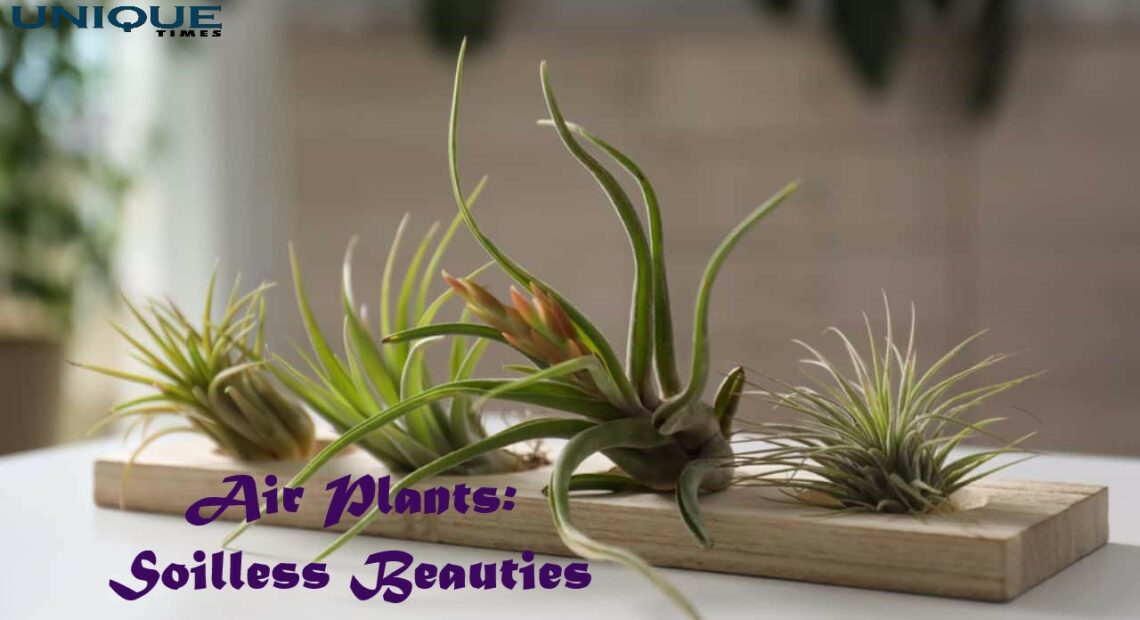Air Plants – Nature’s Minimalist Beauties: Growing Without Soil

Air plants, scientifically known as Tillandsia, are fascinating specimens that captivate the hearts of both seasoned gardeners and novices alike. These unique plants have gained popularity due to their ability to thrive without soil, making them perfect for those who want to add a touch of greenery to their homes or offices without the hassle of traditional potted plants. In this blog post, we’ll delve into the enchanting world of air plants, their characteristics, and essential tips to cultivate these nature’s minimalist beauties.
1. The Wonders of Air Plants: Air plants are part of the Bromeliad family and are native to diverse regions, from rainforests to deserts. Unlike most plants, air plants don’t require soil to survive. Instead, they obtain nutrients and moisture through specialized trichomes on their leaves, allowing them to thrive in the air. These unique adaptations make them an intriguing addition to any plant collection.
2. Creating the Perfect Environment: To ensure the health and vitality of your air plants, it’s crucial to create the right environment for them. Since they don’t rely on soil, you’ll need to focus on other factors, such as proper lighting, humidity, and air circulation. We’ll explore the ideal conditions for your air plants to flourish and provide tips on how to maintain a suitable environment.
3. Displaying Air Plants Creatively: One of the joys of having air plants is their versatility in display options. Due to their lack of soil, you can get creative and showcase them in unique ways. We’ll share some imaginative and aesthetically pleasing ideas for incorporating air plants into your home decor, from stylish hanging arrangements to elegant terrariums.
4. Watering Wisdom for Air Plants: Watering air plants is different from regular potted plants, and overwatering is one of the most common mistakes that can lead to their demise. We’ll explain the proper watering techniques, including misting, soaking, and drying, to maintain the right balance for your air plants’ well-being.
5. Feeding and Fertilizing Air Plants: While air plants don’t rely on soil for nutrients, they still need proper nourishment to thrive and produce flowers. Learn about the different methods of feeding and fertilizing air plants, including using specialized air plant fertilizers, and discover the signs that indicate your air plants are receiving the nutrients they need.
6. Air Plant Care and Maintenance: Like any living organism, air plants require regular care and maintenance to ensure their longevity. We’ll provide a comprehensive care guide, including grooming tips, how to deal with common issues like pests, and essential do’s and don’ts for keeping your air plants healthy.
Conclusion: Air plants offer a unique and enchanting way to embrace nature’s beauty without the constraints of traditional gardening. Their ability to grow without soil, coupled with their diverse shapes and colors, make them a delightful addition to any indoor or outdoor space. By understanding their needs and providing proper care, you can embark on a rewarding journey of nurturing these nature’s minimalist beauties and enjoying their subtle yet captivating presence in your life. Happy air plant gardening!
Picture Courtesy: Google/images are subject to copyright








